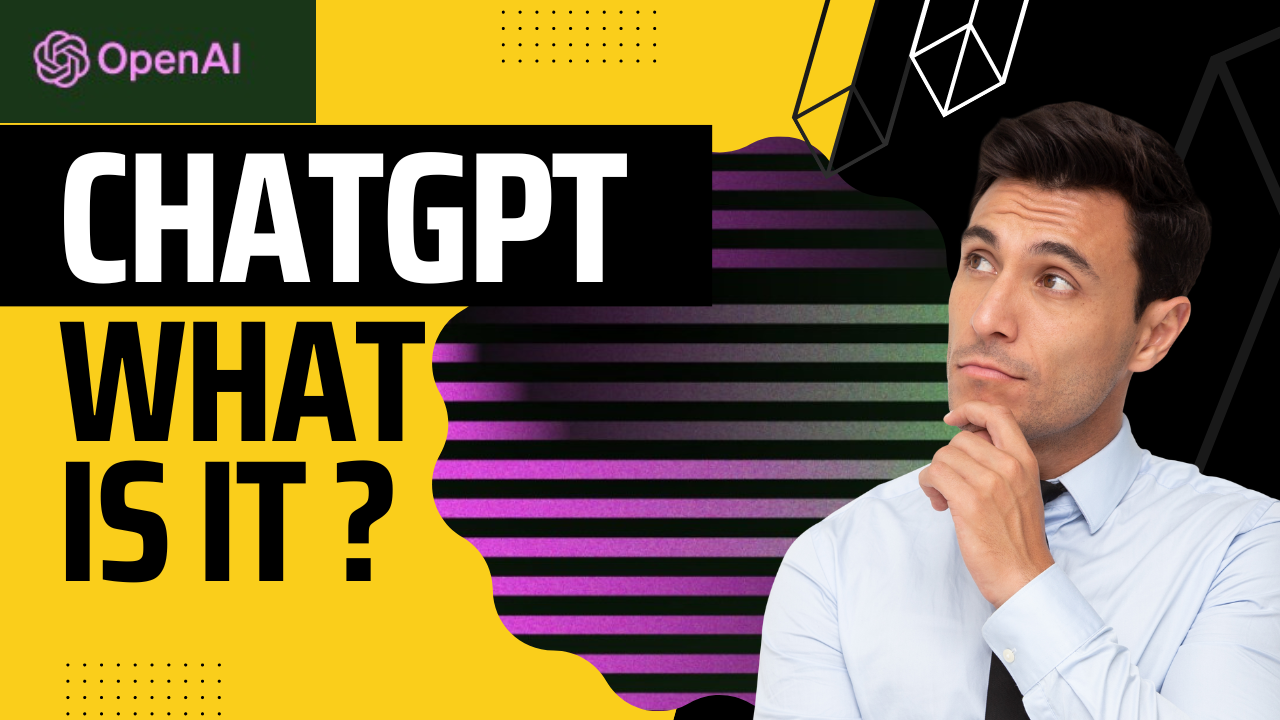
ChatGPT, the famous AI (artificial intelligence) capable of generating written content has not finished talking about him. Developed by OpenAI, this chatbot is much more than a simple conversational agent: we are talking about generative AI. Its applications are numerous and allow, among other things, to write books, to develop lines of code, to perform tedious classifications from a spreadsheet… From a written instruction called “prompt”, ChatGPT accomplishes what is asked of him, in addition to learning. To know exactly what ChatGPT is, we thought it appropriate to let the main interested party speak about what it is.
What is ChatGPT ?
ChatGPT is an exciting advancement in language technology. It is a language model driven by OpenAI which is able to generate text on demand using state-of-the-art artificial intelligence. The name “ChatGPT” comes from the combination of the terms “chat” and “GPT”, which stand for “conversation” and “predictive language transduction model”, respectively. This reflects ChatGPT’s ability to convincingly simulate human conversations.
Definition of ChatGPT proposed by the interested party
ChatGPT was trained on a large body of text, including newspaper articles, novels, film and television scripts, and online conversations. This allows him to understand the context of a conversation and provide relevant and consistent answers.
One of the most important advantages of ChatGPT is that it is able to adapt to a wide range of topics and language styles. This means that it can be used for applications such as generating content for social networks, writing scripts for movies and TV series, or even creating chatbots for businesses.
Additionally, ChatGPT is constantly evolving through continuous learning. This means it can improve over time and become even better at simulating human conversations.
In summary, ChatGPT is an exceptional language model that offers many possibilities in the field of artificial intelligence. Its ability to understand context and generate compelling text makes it a valuable tool for businesses and content creators.
Can ChatGPT impersonate a human writer?
You tell us. Everything you just read was written by ChatGPT, in English, with a simple command: “Write an introductory article about ChatGPT in a journalistic style”
What do we think? Honestly, ChatGPT is amazing. We did not seek to specify our order or attempt several generations. We took the first text proposed by the artificial intelligence and copied it, in order to offer you this little experience. But, at the same time, we are also satisfied with the written output of the machine. The text objectively describes what ChatGPT is, offers a translation of the name for our French readership and goes into the details of how it works without being too technical. In short, a text adapted for the general public.
A few remarks however. First, the style is somewhat laudatory. ChatGPT does not hesitate to use ameliorative adjectives to talk about him and insists a little too much on his exceptional abilities. On the other hand, we see that the software is based on summary logical articulations (“In addition”, “In summary”) which are not to be banned, but which would be used by a human with more moderation.
ChatGPT is a free online tool
No need to download anything and even less to pay for access. ChatGPT has a free version, easily accessible from the OpenAI site. Beware, moreover, of certain applications on the Google Play Store and the App Store, which pretend to be the original app by making Internet users pay for a service which is, in fact, available free of charge.
Only access to companies for professional use is billed by OpenAI.
Related article : AI: The Digital Marketing Revolution
How to use ChatGPT?
To start chatting with the AI, you just have to go to the Open AI website and then create an account. The site is in English, but it is quite easy to find your way around. Start by clicking on the “TRY ChatGPT” button, then let yourself be guided. An email address and a password are enough to create a profile. Once your profile is created, start chatting with ChatGPT in French, it will answer you in the language of Molière.
The site is sometimes a victim of its own success. When too many people are connected, you are redirected to a page which always indicates in English, that the site is overloaded. You will then see the message “ChatGPT is at capacity right now”. You will then have to postpone your connection attempt.
Before the explosion of ChatGPT, OpenAI had already done a lot of work on GPT-3, its first successful tool for generating text from artificial intelligence. The American company has managed to transform its “simple” text editor into a real conversational tool, with which a human interacts with an AI.
Number of ChatGPT users
When it was released to the general public last December, ChatGPT attracted no less than a million users in a few weeks. In April 2023, there were 123 million monthly users. It is the fastest acquisition of a WEB application. This enthusiasm for technology can be explained both by the diversity of what it is possible to do with AI, but also by the curiosity it arouses.
Detect text written by ChatGPT
The availability of a tool such as ChatGPT raises questions about its use. Being able to effectively detect whether AI is at the origin of a written production therefore seems essential. Whether it’s tracking down copies of students who may have tried to cheat or simply determining responsibility for leaked content, especially when you know that ChatGPT is lying with disconcerting aplomb.
To meet this need, OpenAI hastened to release at the end of January, a tool capable of detecting whether the text was generated by ChatGPT or not. However, it is not so easy to detect text from ChatGPT and the “AI Text Classifier” tool still lacks precision. It only says if the text is probably “likely”, or possibly “possibly” from an AI with a non-negligible margin of error. In 9% of cases, the tool assigns a text written by the human to the AI, which could have consequences when we know that Science Po sanctions the use of ChatGPT.






2 thoughts on “ChatGPT, What Is It?”